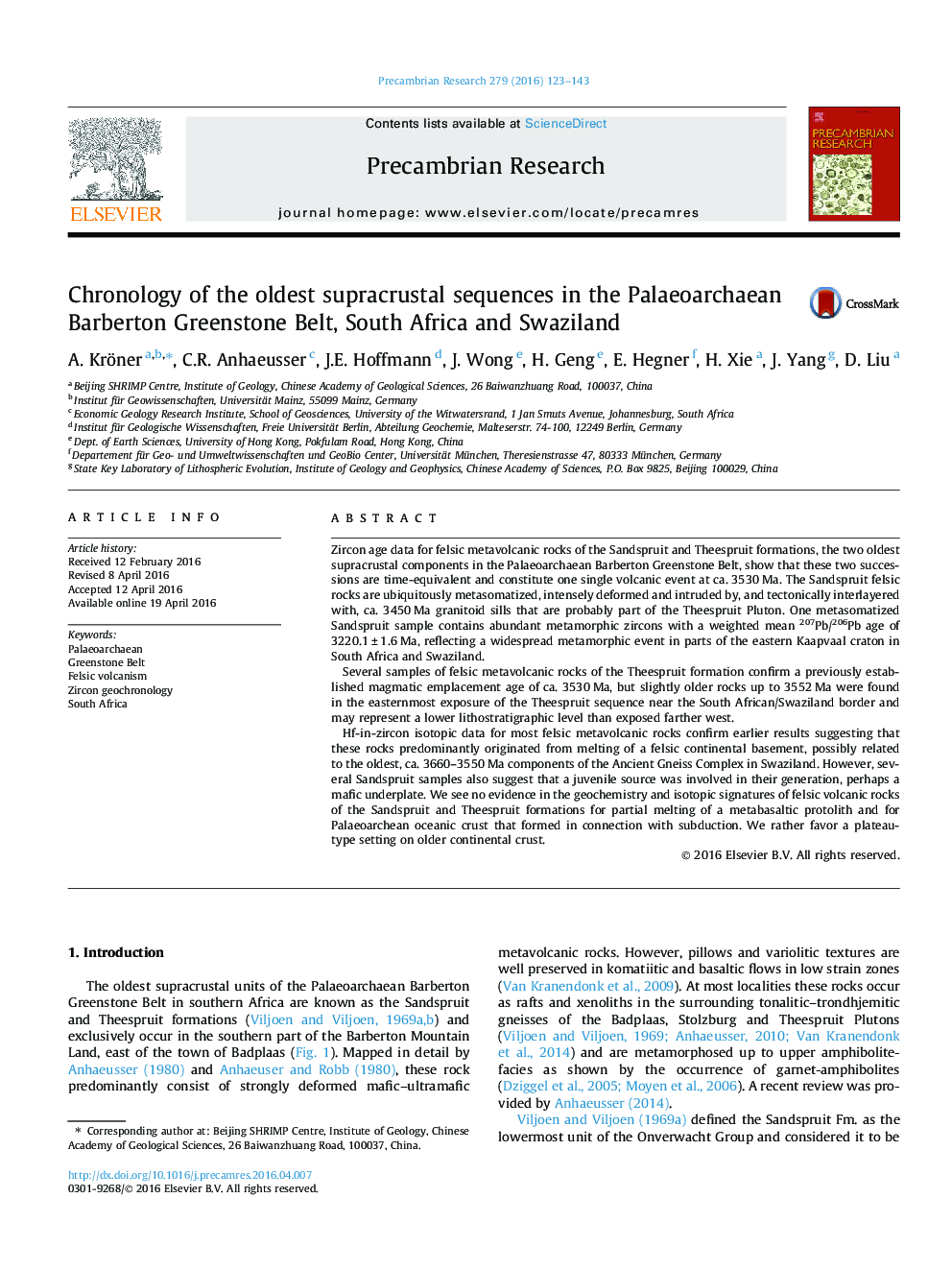| کد مقاله | کد نشریه | سال انتشار | مقاله انگلیسی | نسخه تمام متن |
|---|---|---|---|---|
| 4722420 | 1639596 | 2016 | 21 صفحه PDF | دانلود رایگان |

• Felsic metavolcanic rocks of the Sandspruit and Theespruit fms. were both deposited at ca. 3530 Ma ago.
• Hf and Nd isotopic data suggest derivation dominantly from melting of older felsic crust.
• A metamorphic zircon age of ca. 3220 Ma confirms a regional metamorphic event.
• Formation of the bimodal Sandspruit–Theespruit sequences was a result of magmatic underplating.
Zircon age data for felsic metavolcanic rocks of the Sandspruit and Theespruit formations, the two oldest supracrustal components in the Palaeoarchaean Barberton Greenstone Belt, show that these two successions are time-equivalent and constitute one single volcanic event at ca. 3530 Ma. The Sandspruit felsic rocks are ubiquitously metasomatized, intensely deformed and intruded by, and tectonically interlayered with, ca. 3450 Ma granitoid sills that are probably part of the Theespruit Pluton. One metasomatized Sandspruit sample contains abundant metamorphic zircons with a weighted mean 207Pb/206Pb age of 3220.1 ± 1.6 Ma, reflecting a widespread metamorphic event in parts of the eastern Kaapvaal craton in South Africa and Swaziland.Several samples of felsic metavolcanic rocks of the Theespruit formation confirm a previously established magmatic emplacement age of ca. 3530 Ma, but slightly older rocks up to 3552 Ma were found in the easternmost exposure of the Theespruit sequence near the South African/Swaziland border and may represent a lower lithostratigraphic level than exposed farther west.Hf-in-zircon isotopic data for most felsic metavolcanic rocks confirm earlier results suggesting that these rocks predominantly originated from melting of a felsic continental basement, possibly related to the oldest, ca. 3660–3550 Ma components of the Ancient Gneiss Complex in Swaziland. However, several Sandspruit samples also suggest that a juvenile source was involved in their generation, perhaps a mafic underplate. We see no evidence in the geochemistry and isotopic signatures of felsic volcanic rocks of the Sandspruit and Theespruit formations for partial melting of a metabasaltic protolith and for Palaeoarchean oceanic crust that formed in connection with subduction. We rather favor a plateau-type setting on older continental crust.
Figure optionsDownload as PowerPoint slide
Journal: Precambrian Research - Volume 279, July 2016, Pages 123–143